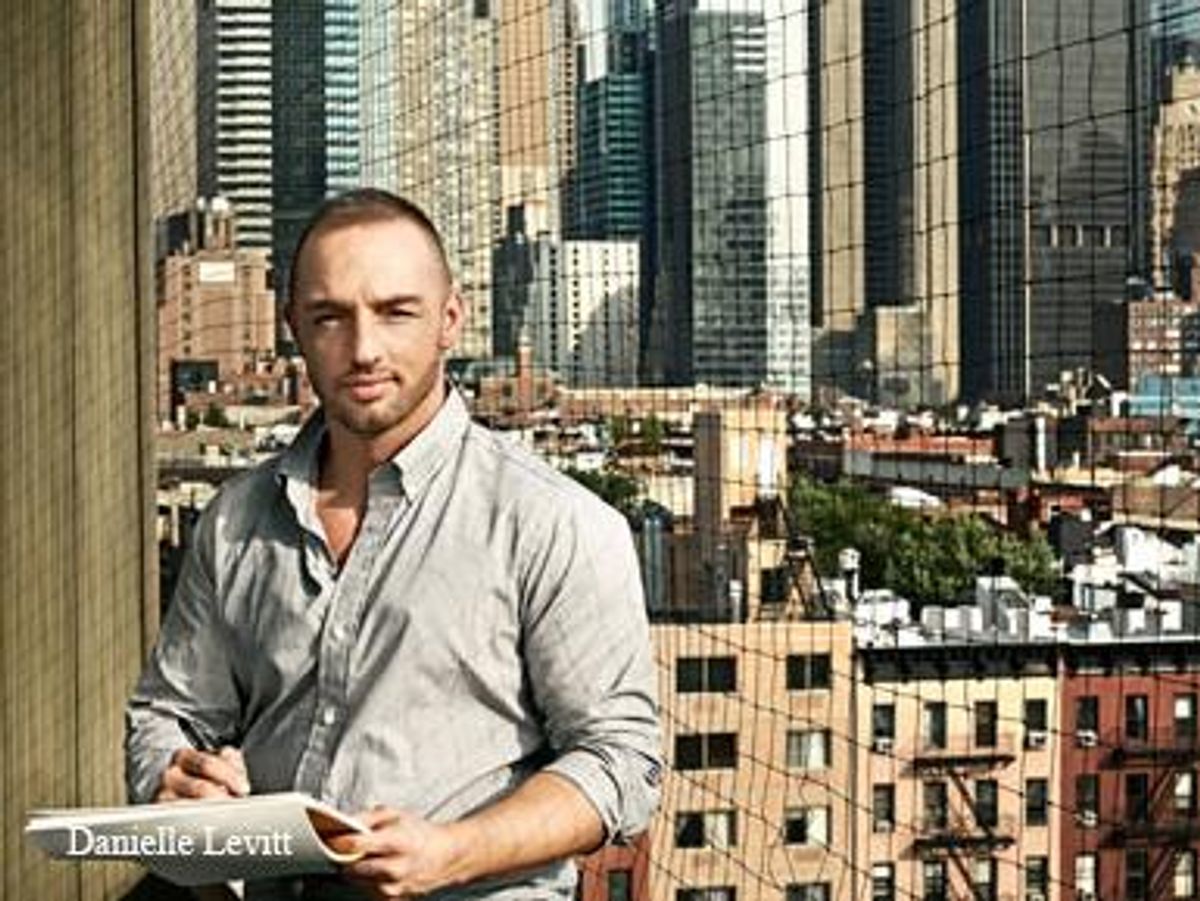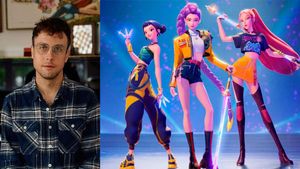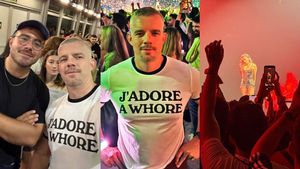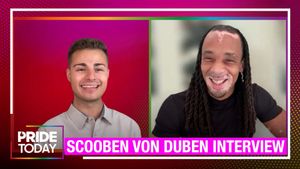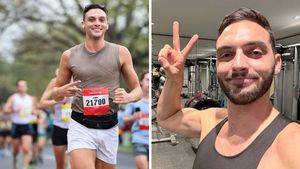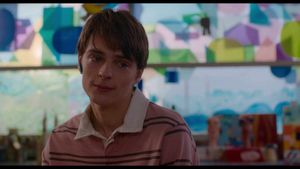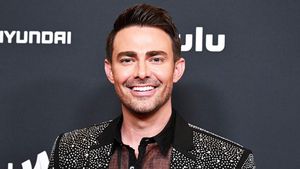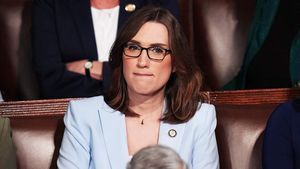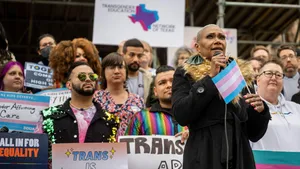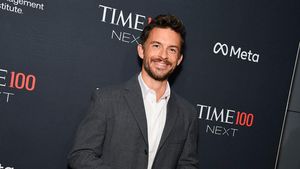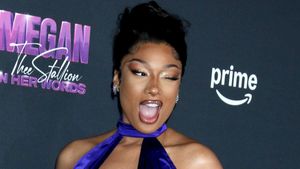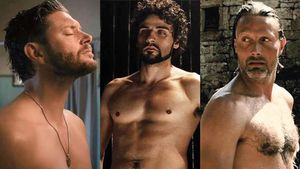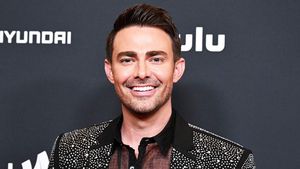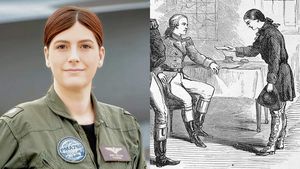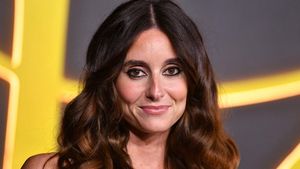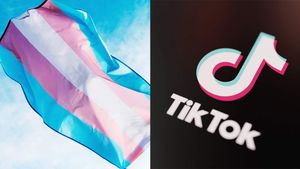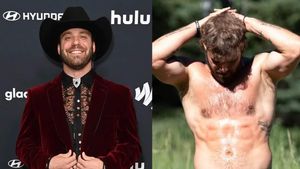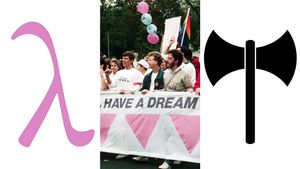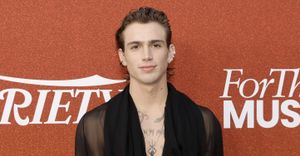Photo by Danielle Levitt
Phil Jimenez is a Gen-X comic book legend — the brilliant artist and writer has helped DC Comics and its heroes transform through many iterations over the last two decades. With the advent of the company’s recent Rebirth — a relaunch and reimagining of classic superhero comics under one imprint, not unlike Marvels Secret Wars— Jimenez was tasked with overseeing the writing and artistic duties on Superwoman. It was released last week to both fanfare and controversy. That's exciting news for Jimenez fans and Superwoman followers alike.
The writer artist gained renown for his fan favorite work on Wonder Woman, The Invisibles, and The Teen Titans for DC as well as the New X-Men at Marvel. Jimenez, who came out gay in the 1990s, told Kristin Russo on PBS' First Person that he sees comics as "inherently gay or inherently queer."
What many people don’t realize is that as a young artist, Jimenez’s early aesthetic was formed by his personal and professional relationship with DC’s late creative director, Neal Pozner, an HIV-positive artist who shaped the direction of DC in ways few fans realize.

After graduating from The School of Visual Arts in New York City, 21-year-old Jimenez was hired by DC Comics, the American publishing house and division of DC Entertainment, where Pozner was his boss and mentor.
"He was an incredibly talented man," Jimnez says of Pozner, who he immediately admired. Pozner wasn't an easy boss, he had what Jimenez calls, "some very strong opinions about the way things should be done."
By then, Pozner (who had designed album covers for The Kinks and Jimi Hendrix before he moved to the comic world) had risen the ranks at DC from production designer (where he wrote the '80s-era Aquaman miniseries) to group director of creative services. The artist's well-known exacting standards shaped Jimenez's artisitic style, and they did little to discourage Jimenez from developing a crush on his 37-year-old boss.
"I'd hang out with him at work, in the offices, far later than I had any reason to," Jimenez recalls. "I would buy clothes I couldn't afford to impress him. And eventually, I mustered the nerve to ask him on a date."
But Pozner was hesitant to date someone who was both younger and HIV-negative.
"He was 15 years older than I was," Jimenez, now in his 40s, acknowledges. "And he had been my boss. [But] against his better judgment, he said yes. And it actually ended up being a really wonderful relationship.”
Sadly, it was also a painfully brief one. Pozner passed away in 1994 from AIDS-related complications. In tribute, Jimenez came out as gay on the final page of the Tempest, dedicating the comic to his late partner.
In the decades since Pozner oversaw the look of the books during the Bronze age of comics, there have been dramatic editorial shifts at DC, which is now an entertainment powerhouse, very much influenced by the film industry.
“I’ve gone on at length before about how I think the philosophies of the company were radically altered by the death or departure of key players: Neal, Archie Goodwin, and Jeanette Khan," Jimenez explains. "To say it’s a different world now, while obvious, would be no understatement. There are aesthetic concerns, and financial ones, that simply didn't exist when we started, and material now is shaped with a real eye on supporting film and TV. We feed that media in many ways as well as support it, and so the philosophy is as much about corporate synergy as it is risk taking and good comics — though the two are not aways mutually exclusive."
Phil Jimenez (below right) counts Project Runway's Tim Gunn as a fan

For Jimenez, Rebirth feels a bit like the immediate post-Crisis era, where two different comic universe sensibilities are “merged” into one, taking bits and pieces from each. “This is still the New52 Universe, but with pre-Flashpoint, post-Crisis elements thrown in for familiarity and context. So it feels both old and new, and it feels like a universe that hasn’t entirely been written yet, with pockets to reexamine and explore.”
His role on the Superwoman relaunch came about when Jimenez began having conversations with DC Comics co-publisher Dan DiDio last October about coming back to DC Entertainment. Jimenez initially offered to take over the reigns of Superman, and was paired with another superstar creator, Bryan Hitch (who had previously worked on Justice League and The Avengers for Marvel). Jimenez has known Hitch his whole career and was very excited about the possibility of drawing Superman on a regular basis. But then the powers that be decided that the books were going to be bi-weekly, a scheduling change that forced Hitch to drop out. Jimenez was switched to Action Comics featuring a new Superwoman, which eventually spawned the Superwoman series with Jimenez attached as both writer and artist.

“I was originally hesitant," Jimenez admits about taking on Superwoman. "I’m not sure the world needs another female heroine-protagonist written and drawn by a man."
But that didn't stop him from unveiling Issue One with a twist that stunned both fans and reviewers, ending with the apparent death of a DC Universe regular. ("Did DC just do that?" a dazed fan asked on Twitter). It didn't help that it was one of the few beloved female characters. In a medium with a noteable dirth of positive and significant female characters, killing one off feels dangerously similar to the overused TV trope of killing off lesbian and bisexual characters to move the plot of others along.
"We comprise such a teeny-tiny fraction of characters on television to begin with that killing us off so haphazardly feels especially cruel," Riese wrote on AutoStraddle. Fans at this summer's Comic-Con debated the same thing.
"I have no desire to hurt fans; it’s simply not my thing," Jimenez tells Plus. "I do believe in tugging with, playing with, emotional connections to get people interested, though, and to surprise a group who feels like they’ve seen everything in comics!"
He urges fans to give the Superwoman story a chance to play out. This is a serialized medium," he explains. "It’s not a single issue; it’s the first, a 'pilot' to launch a series. While it sounds trite to say, '[her] story isn’t over yet,' I know that to be true. And I certainly hope people shocked by the ending of [issue] number one will stick around for a while and see how this piece plays out!"
Jimenez says he took the Superwoman assignment "after some counsel, with the hopes of at least launching the book, and maybe getting some more diverse voices on it along the way.” He also wants to get female characters right. To those who question his success in doing so in Superwoman #1, Jimenez says, "While I like to believe 20-plus years of experience writing and working on female characters gives me some goodwill — and perhaps some legitimacy — I would be a fool not to recognize the enormous responsibility I’ve been given and to take it seriously. I am incredibly conscious of my age and gender while I writing these characters; I have to be able to find their voices and make them as authentic as I’m able to do so. Not only is it my job, I think it’s my duty to do so. I continue to consult several women in my life and I hope I’m actually listening to them when they tell me what works and what doesn’t. So far, they seem to think what I’ve done is working. I hope that lasts."
Ultimately Jimenez insists he would like to see more women — and people of color — on the other side of the book: creating, writing, and drawing and generating the material. He even hopes to help mentor that new talent.
“Neal [Pozner] was a genius teacher and I wish I could follow in his footsteps doing new talent development at DC. I see so many young artists with such talent making mistakes that are so common, and which Neal corrected — quite forcefully — in me. And I would love to pass down that knowledge, and learn a few new techniques myself. These young people are coming to the work with some remarkable sensibilities, and finding the happy middle ground, for me, is always the goal. I simply think the comics will be better for it!”
